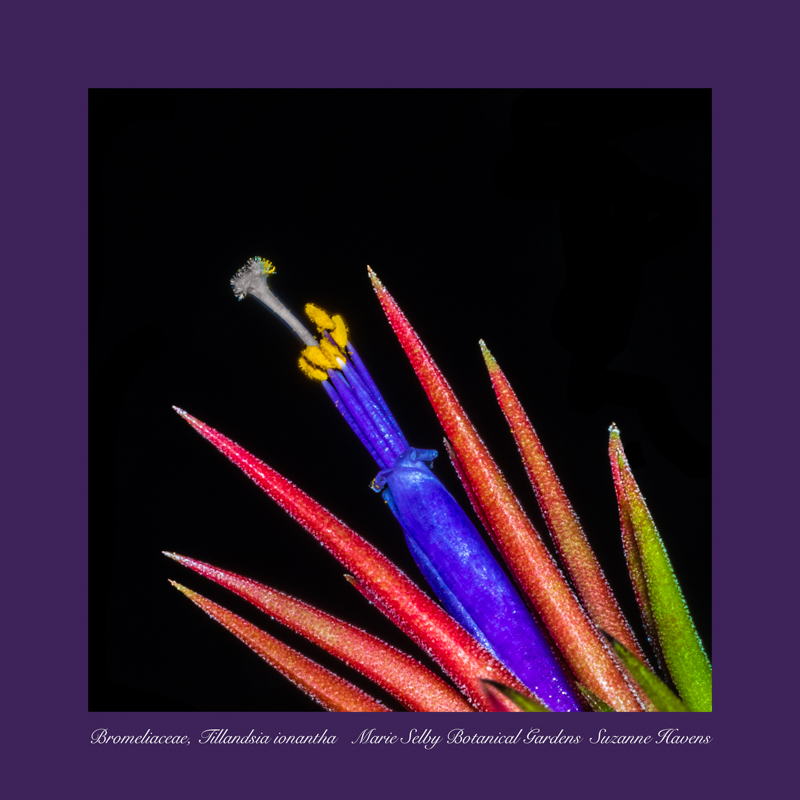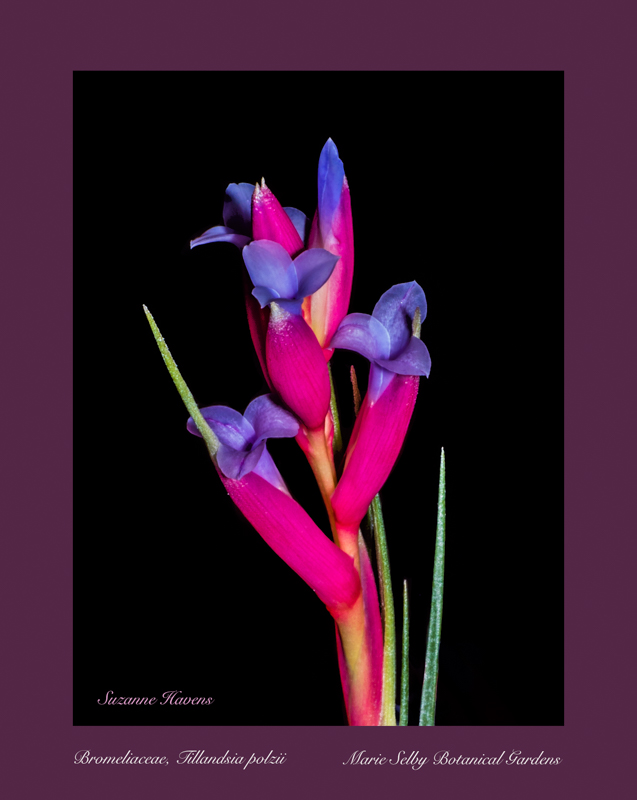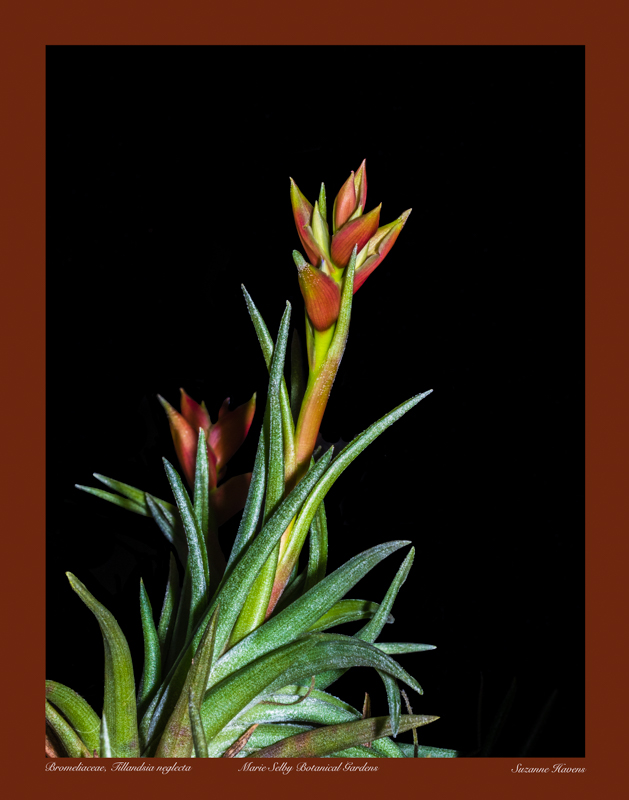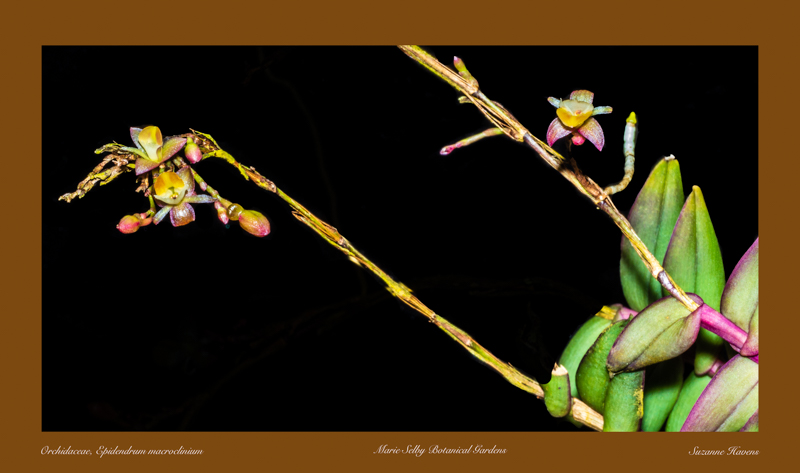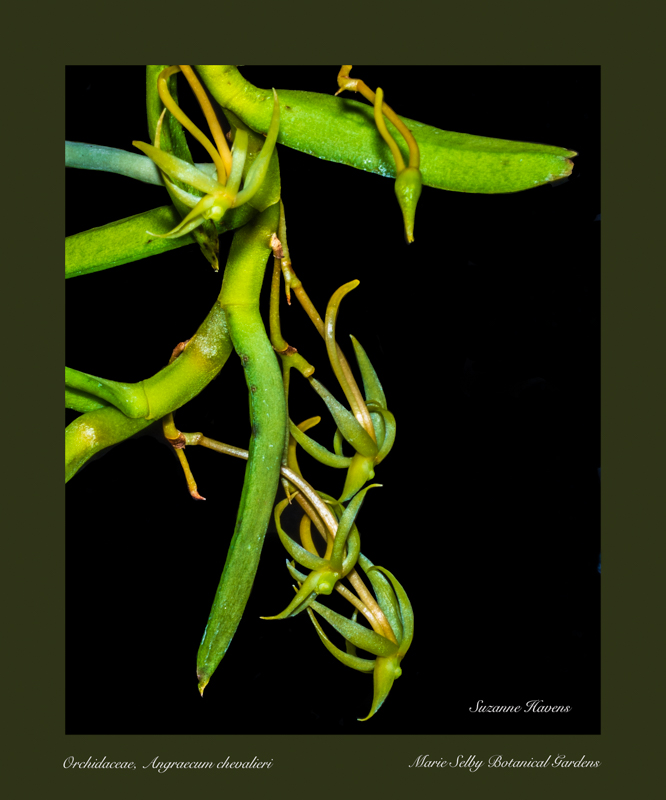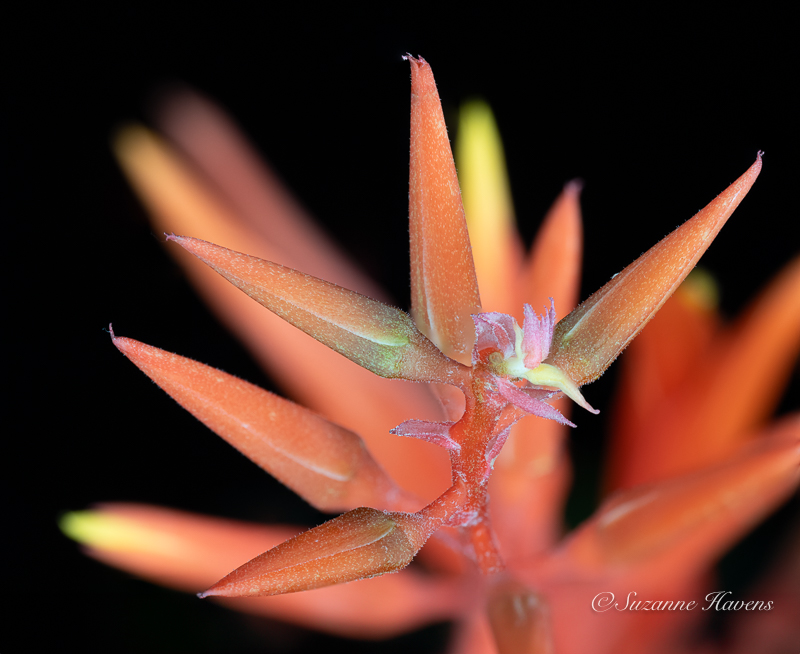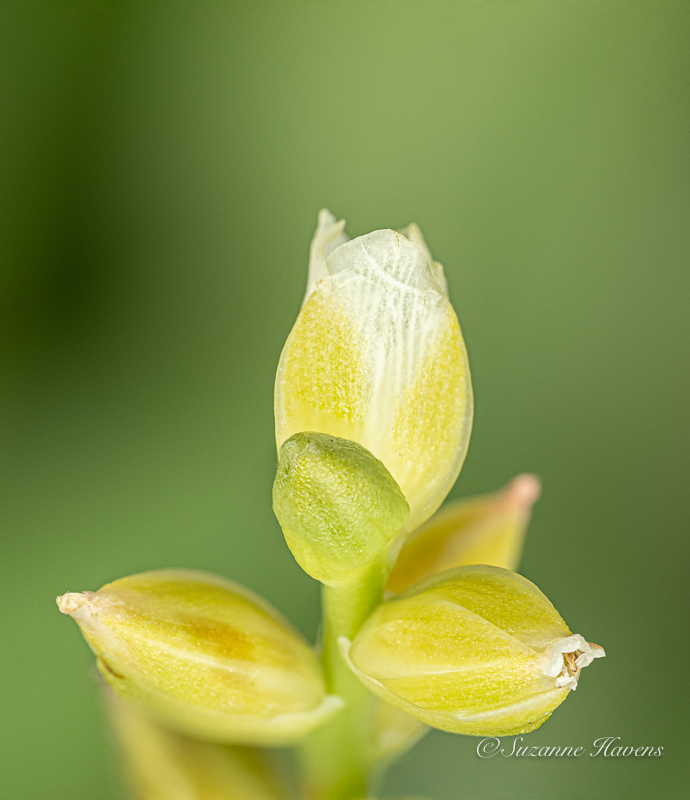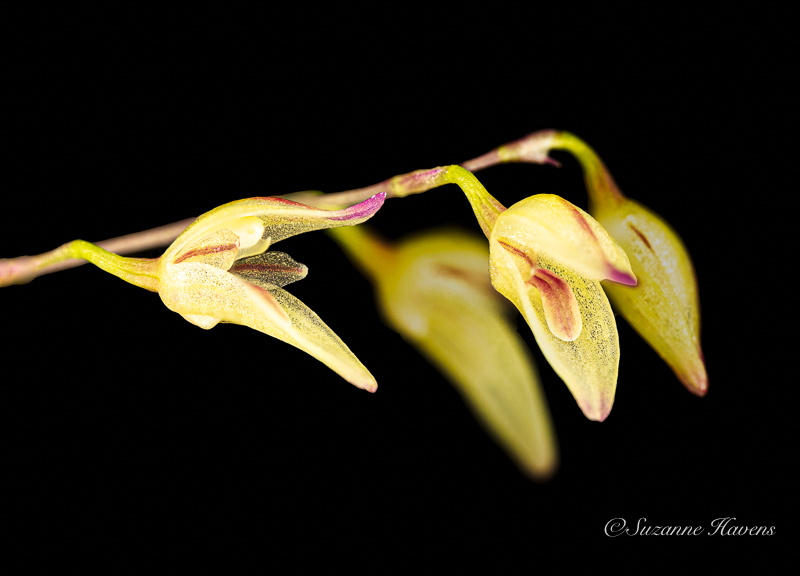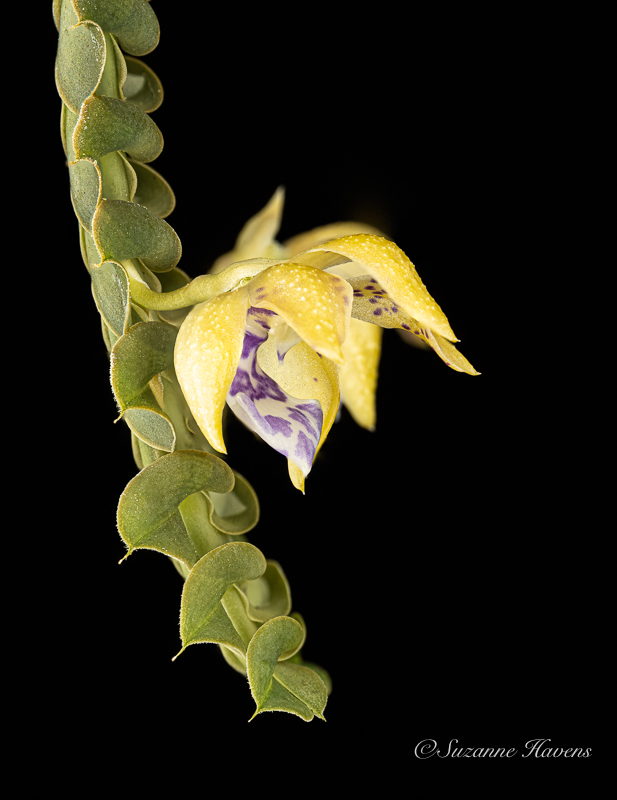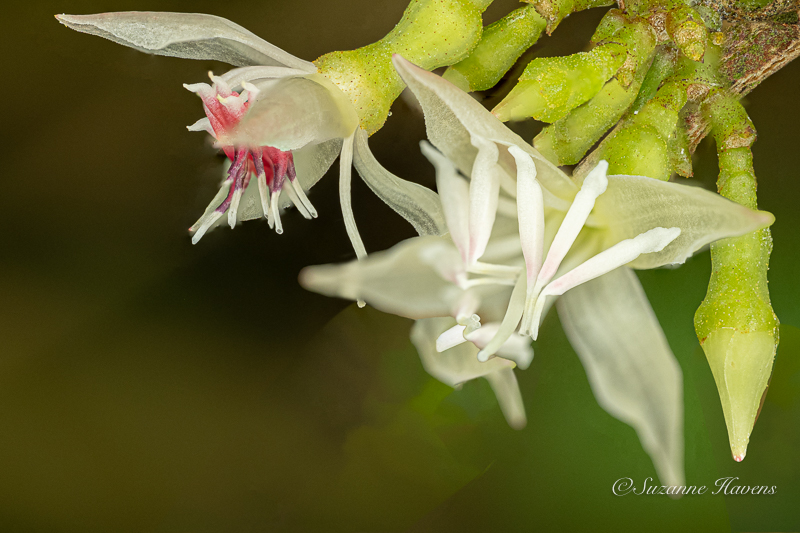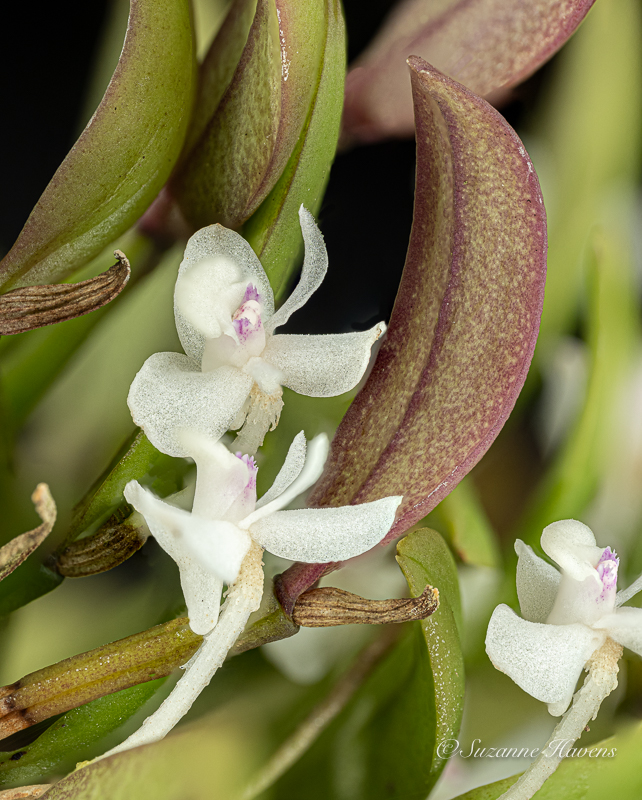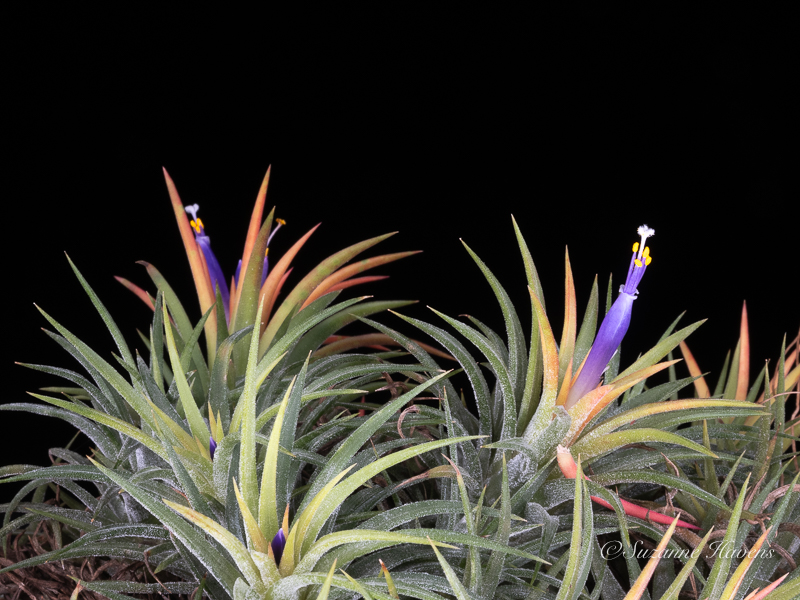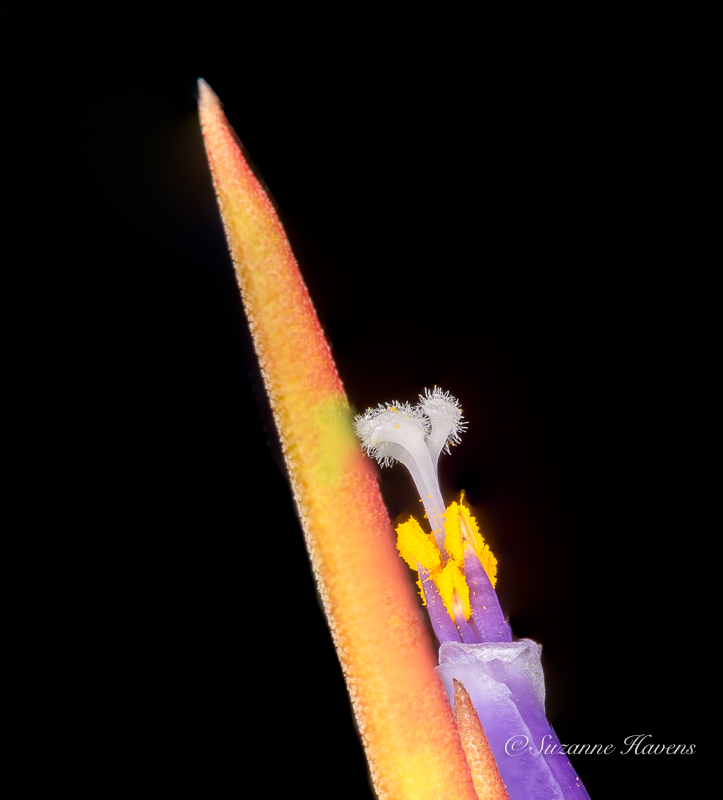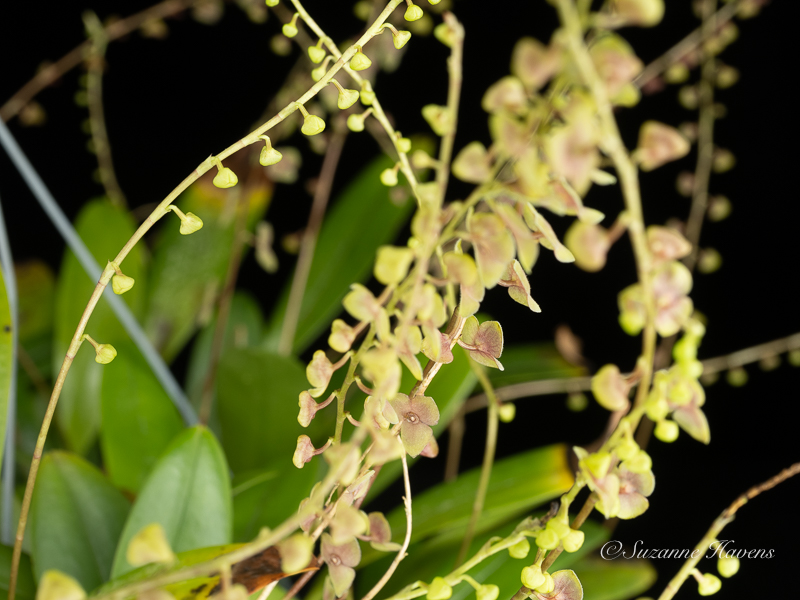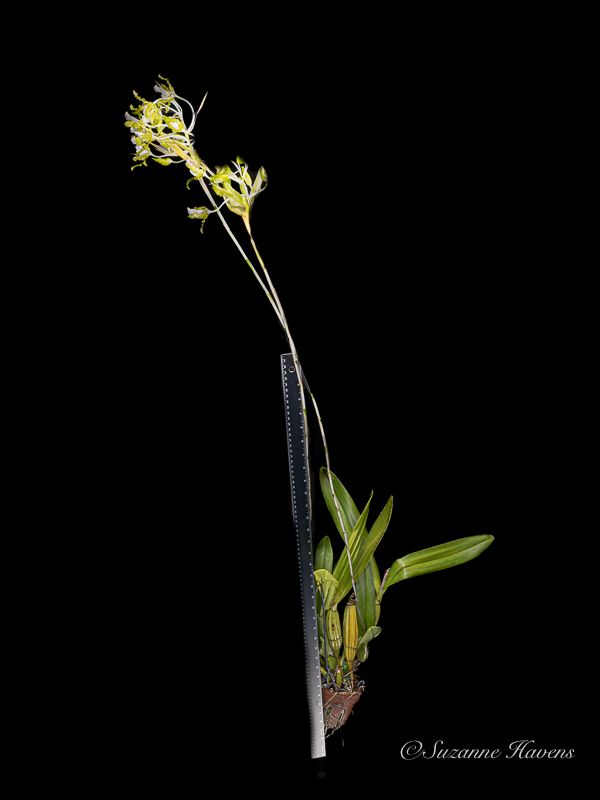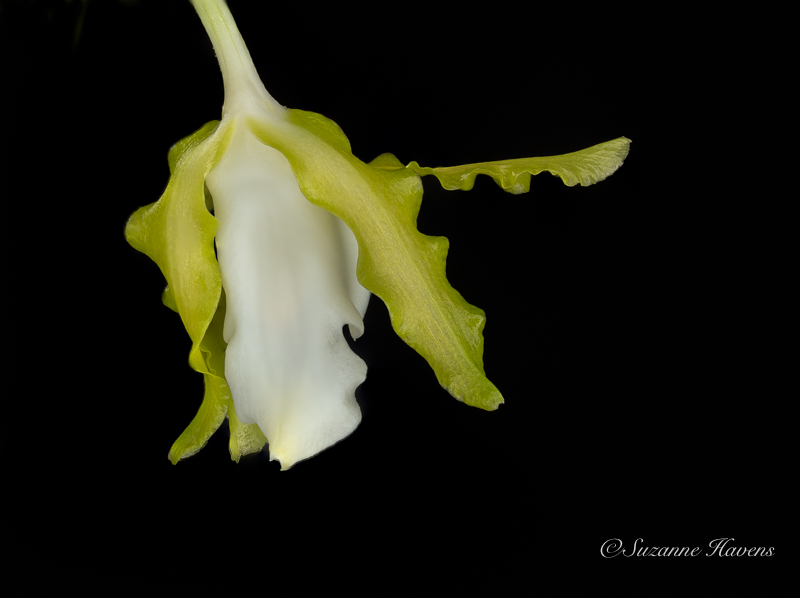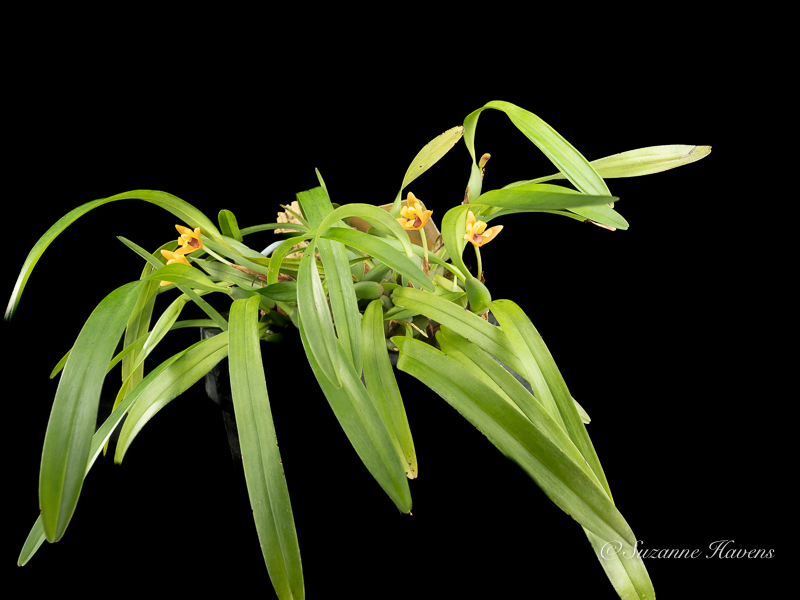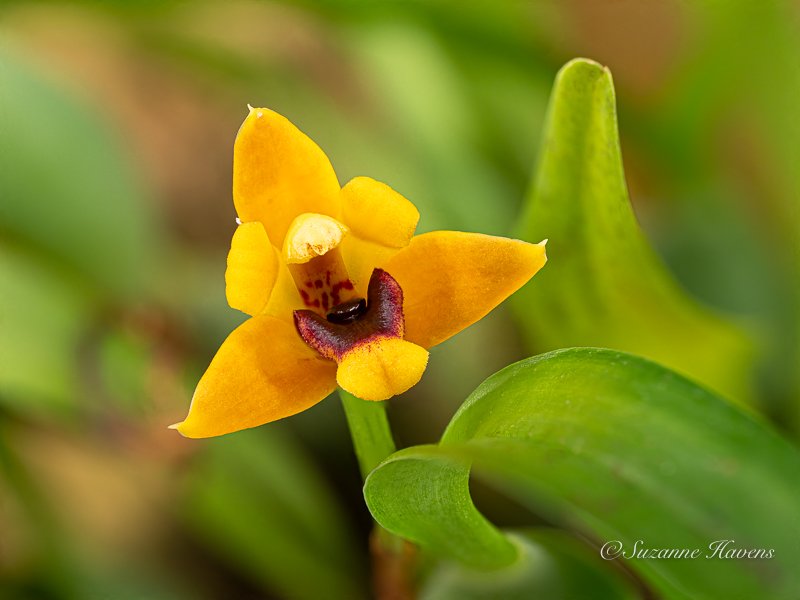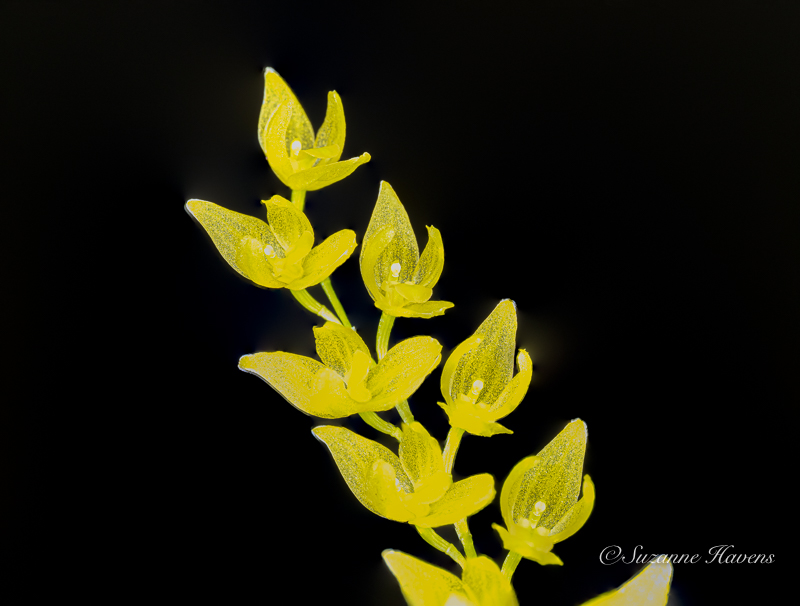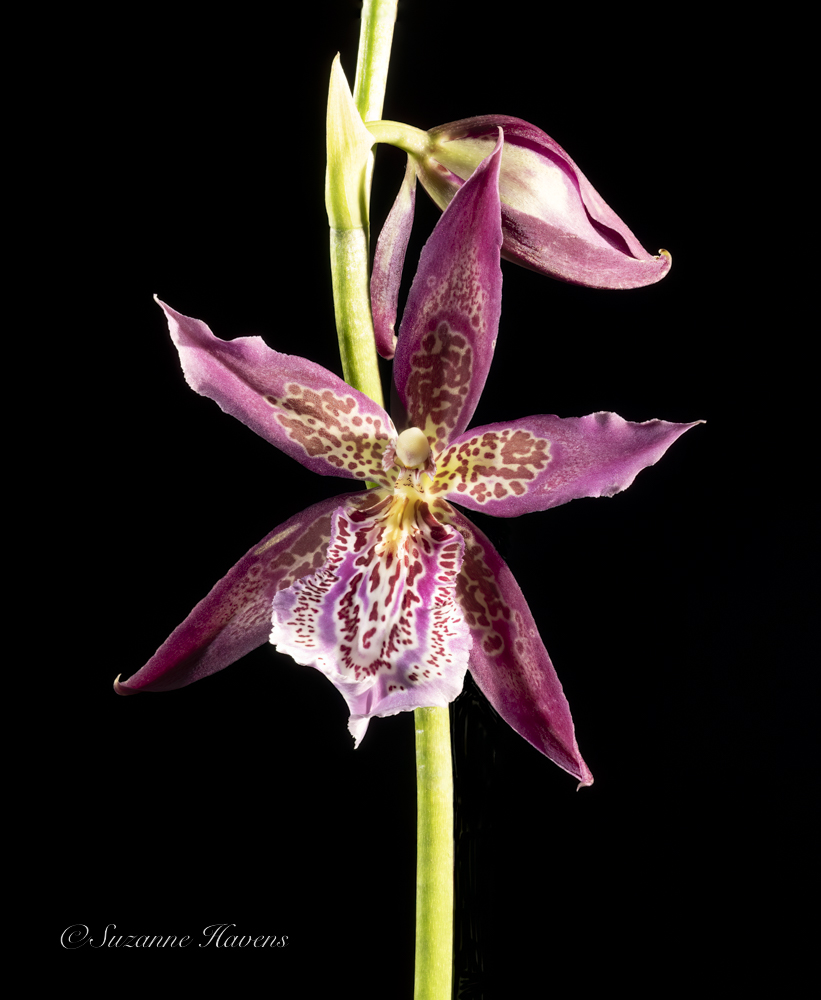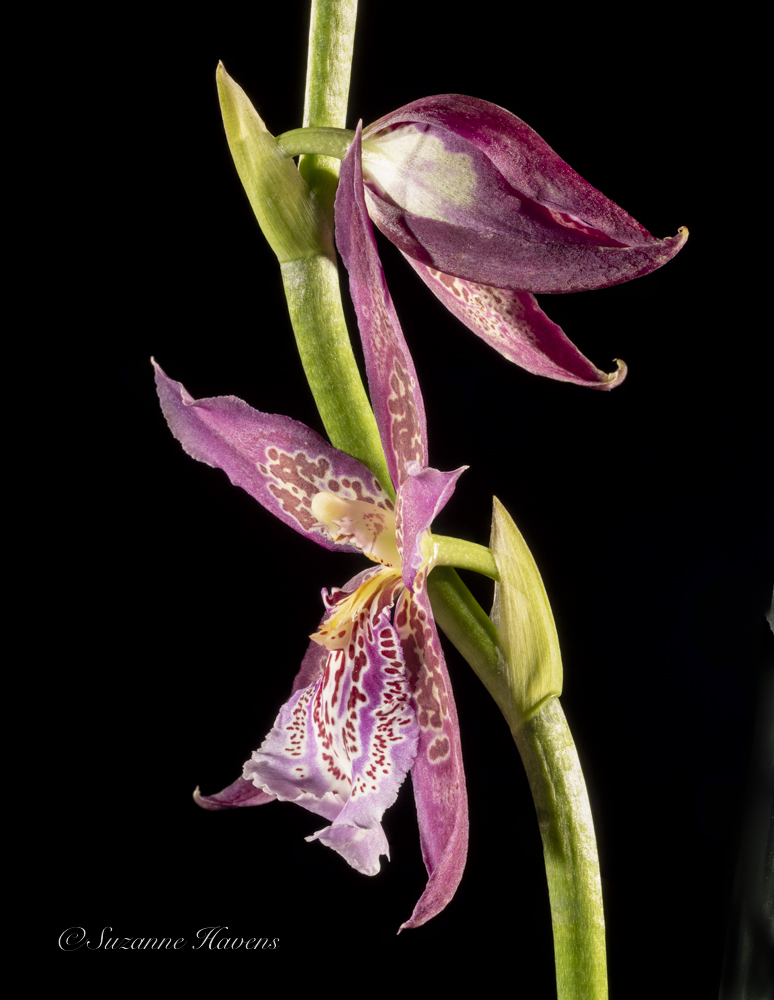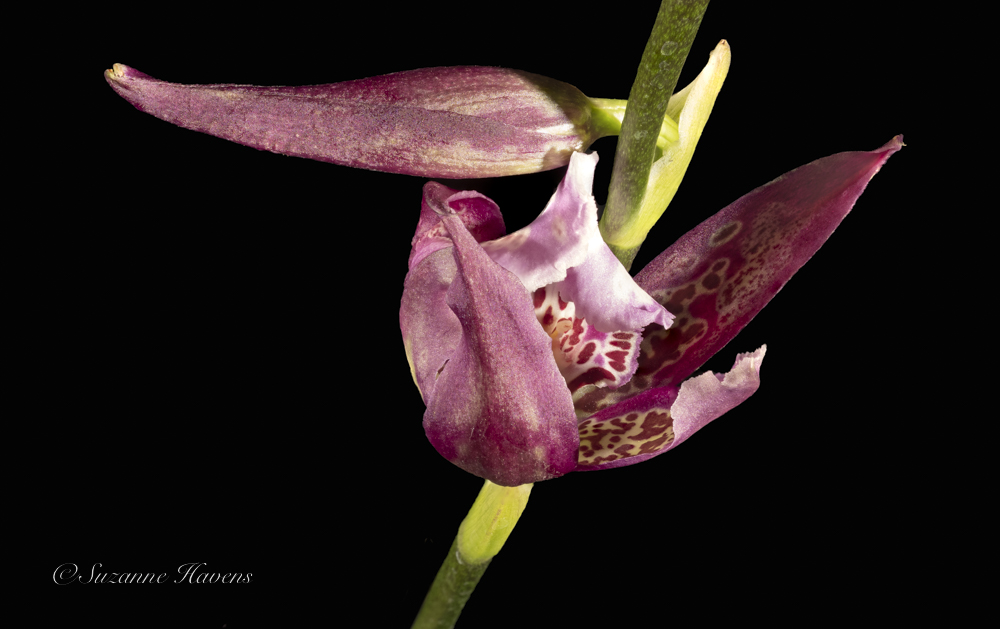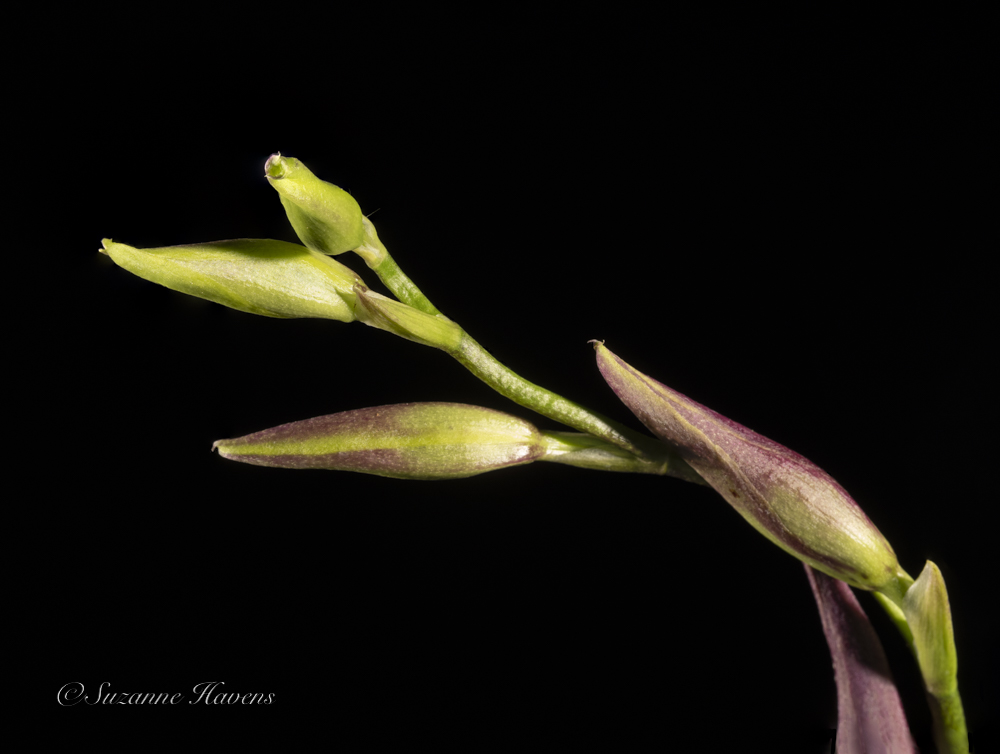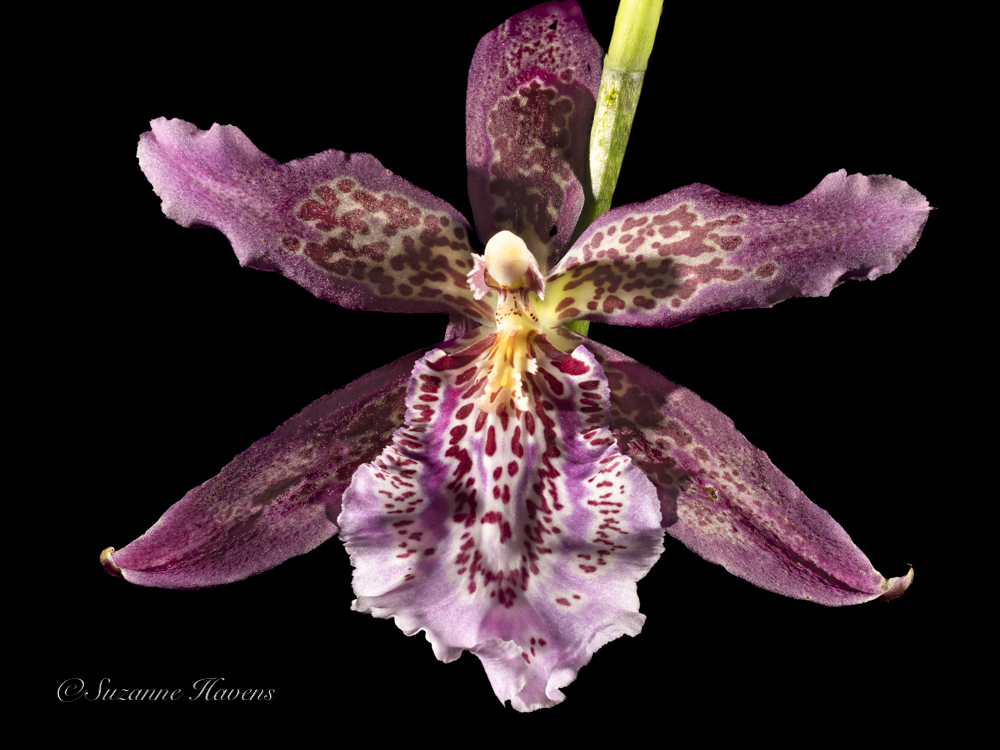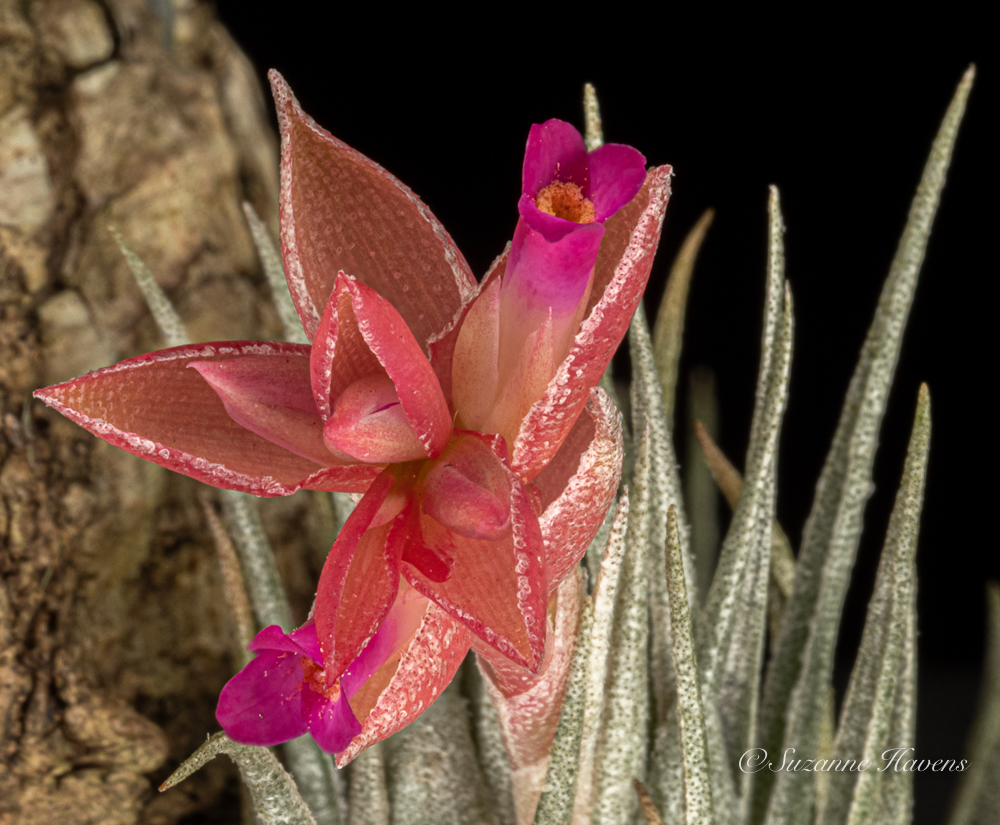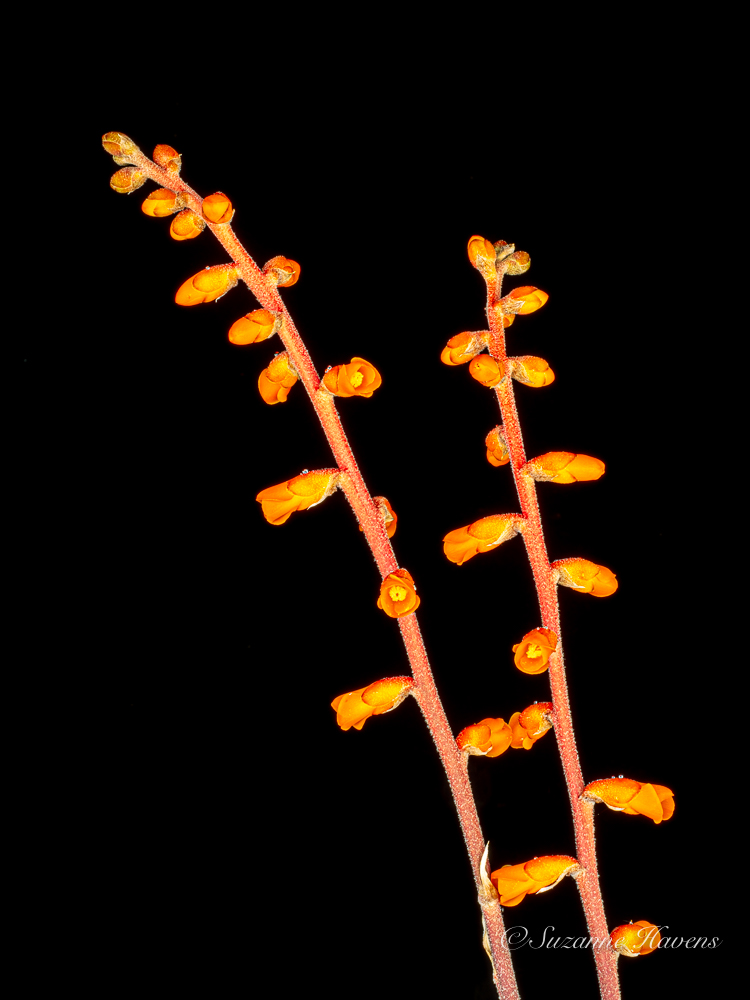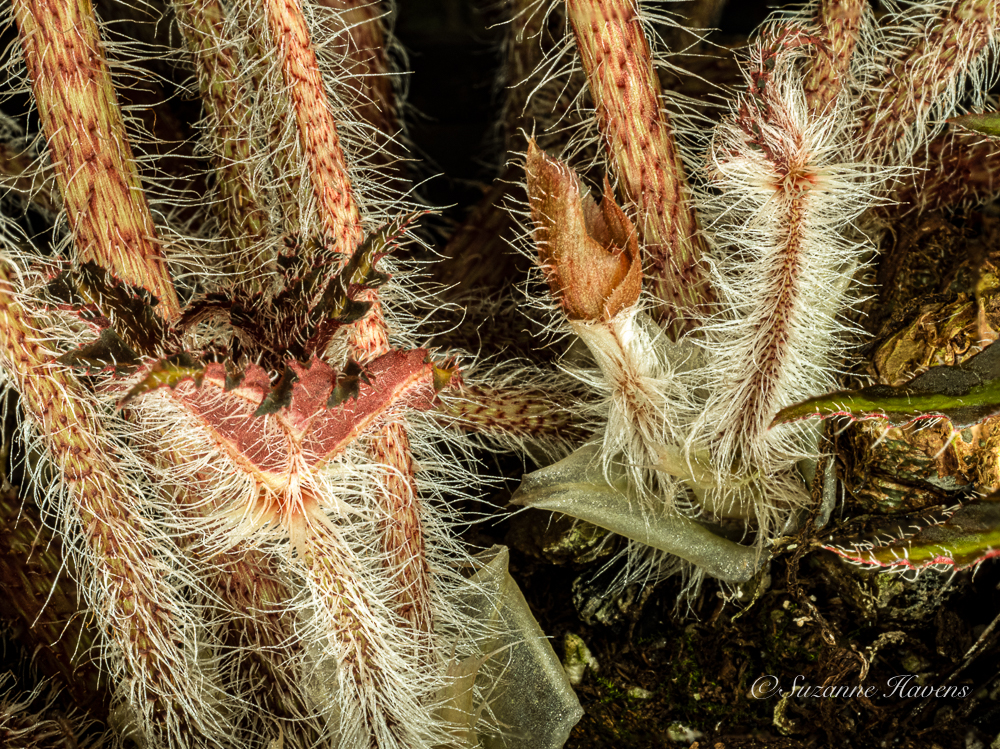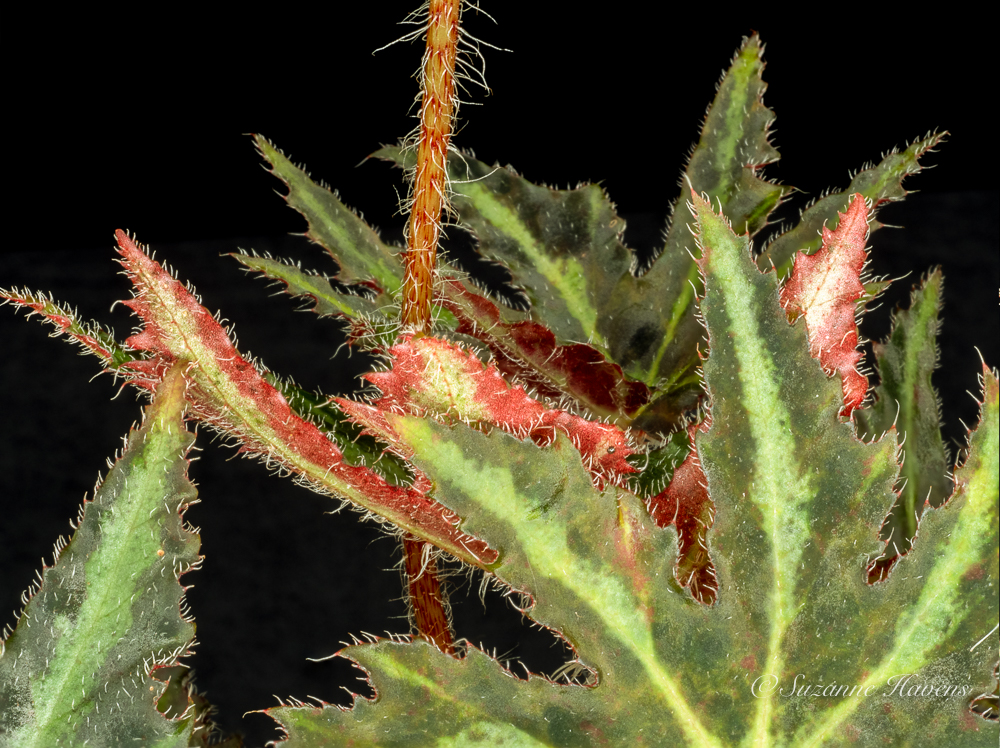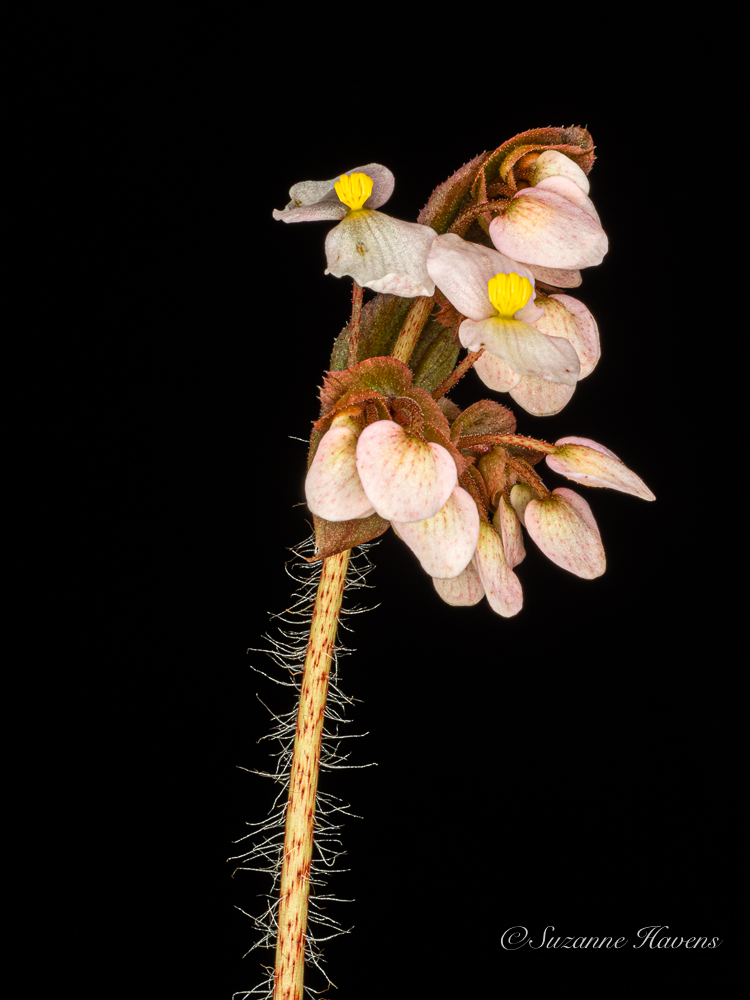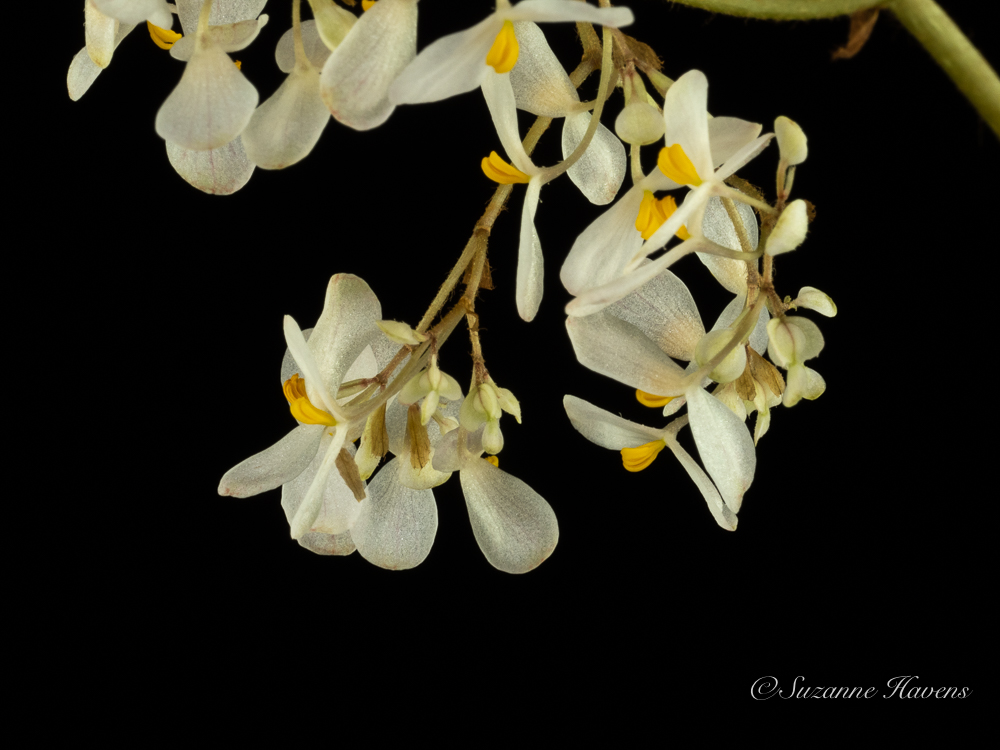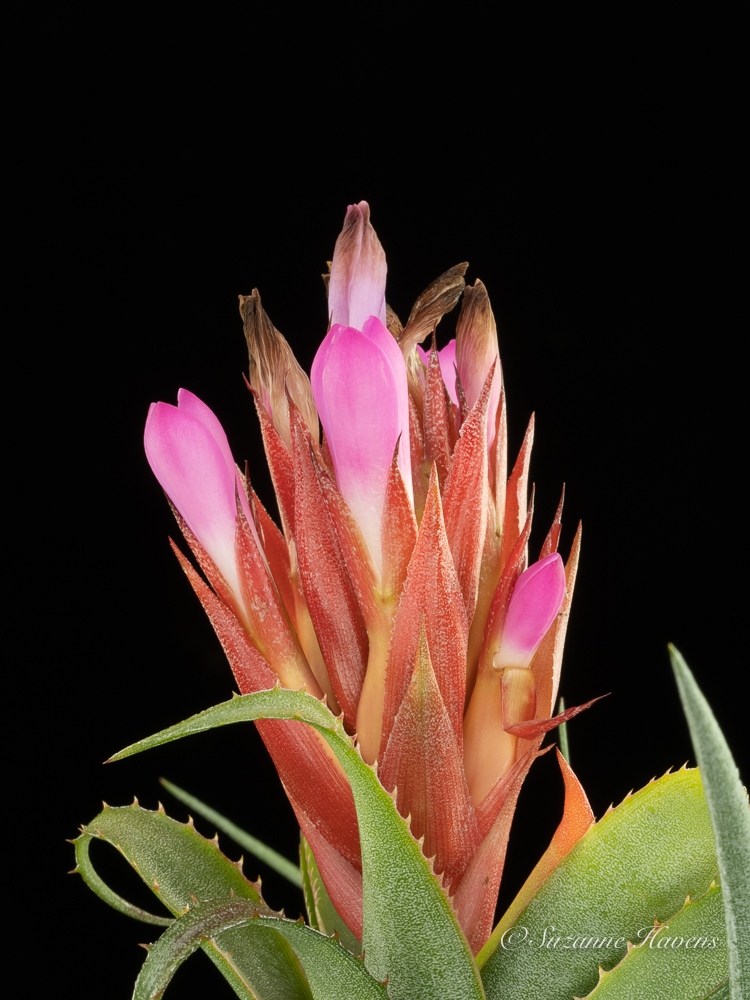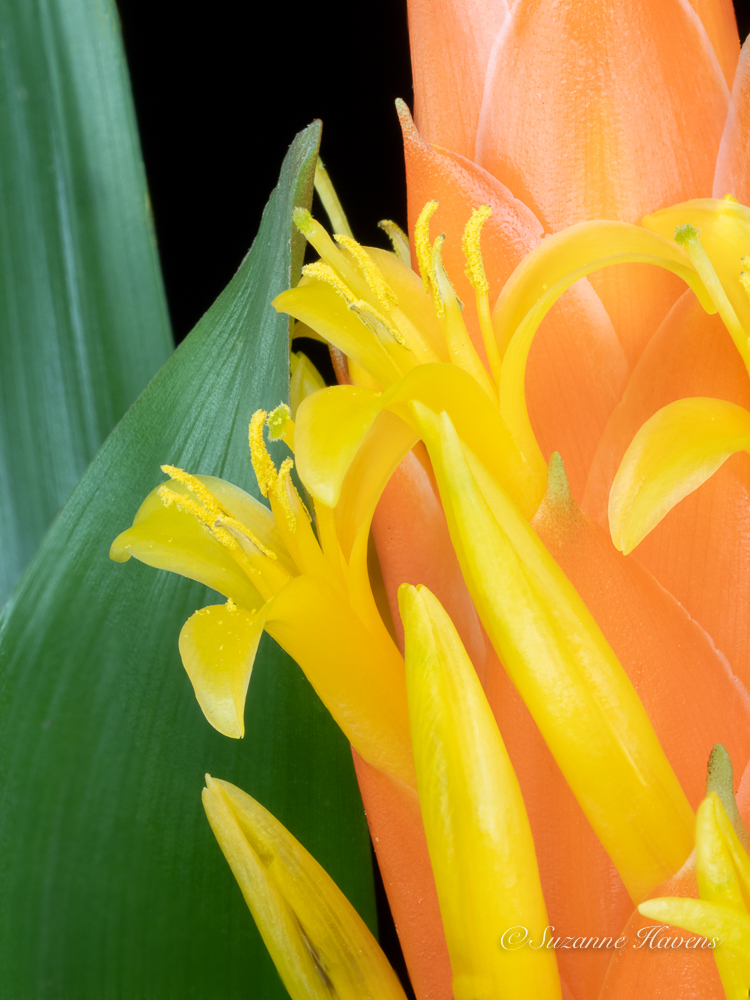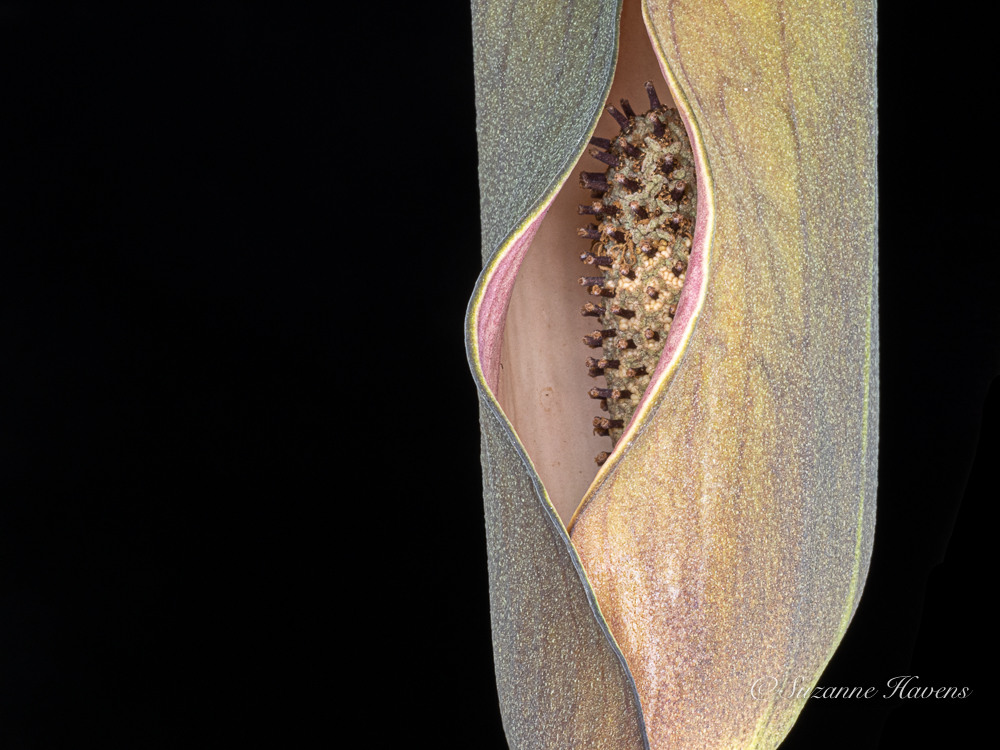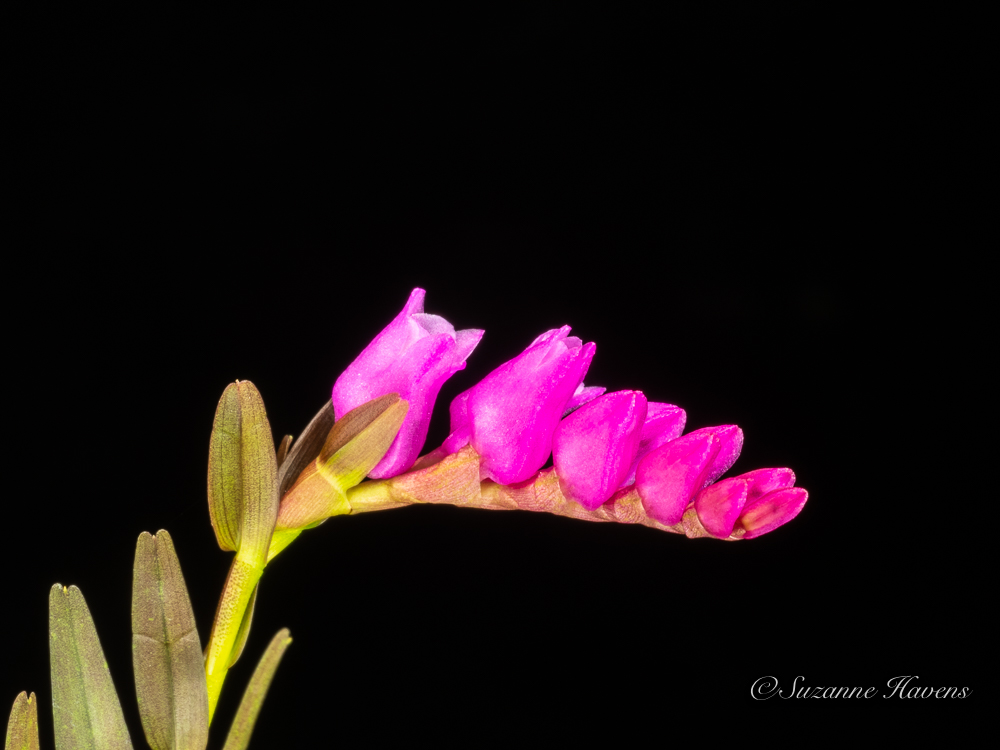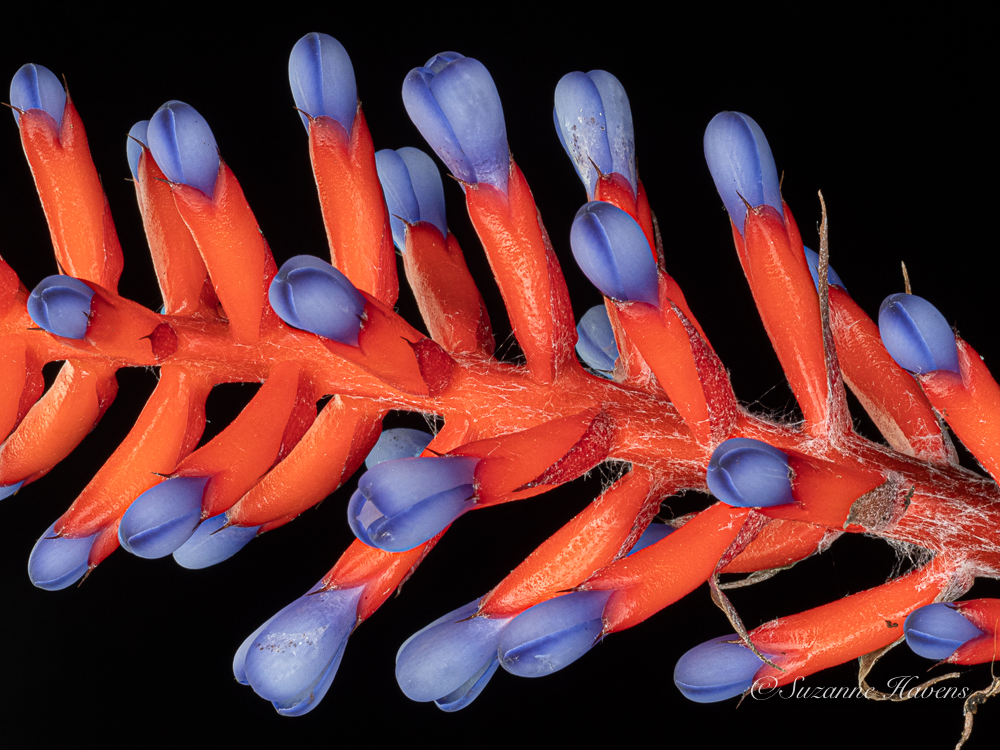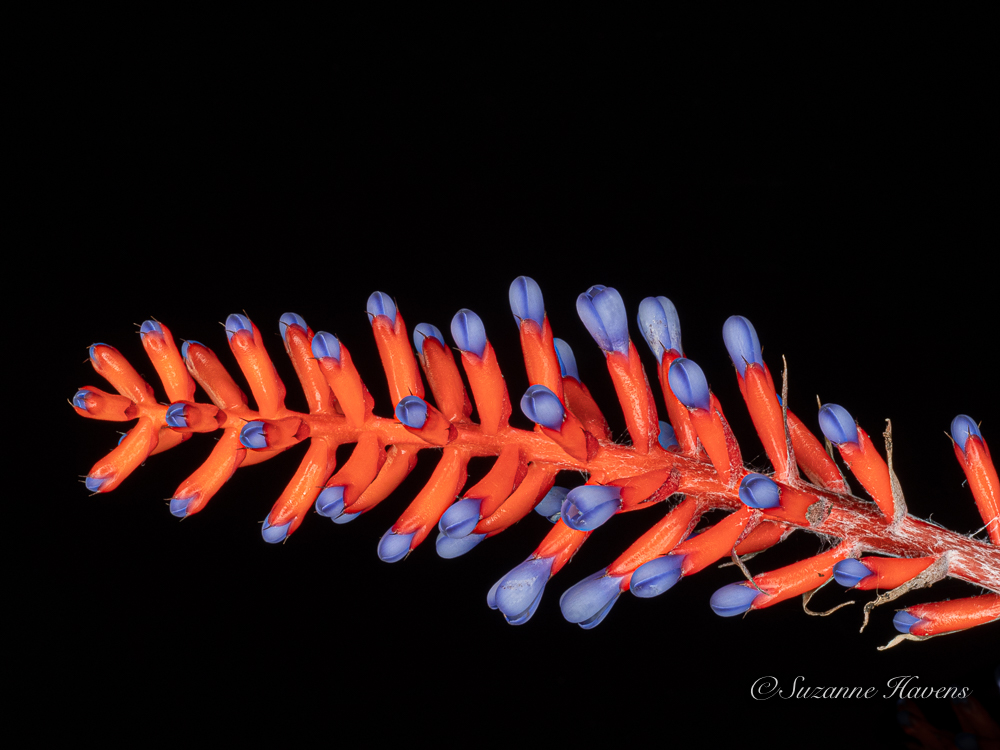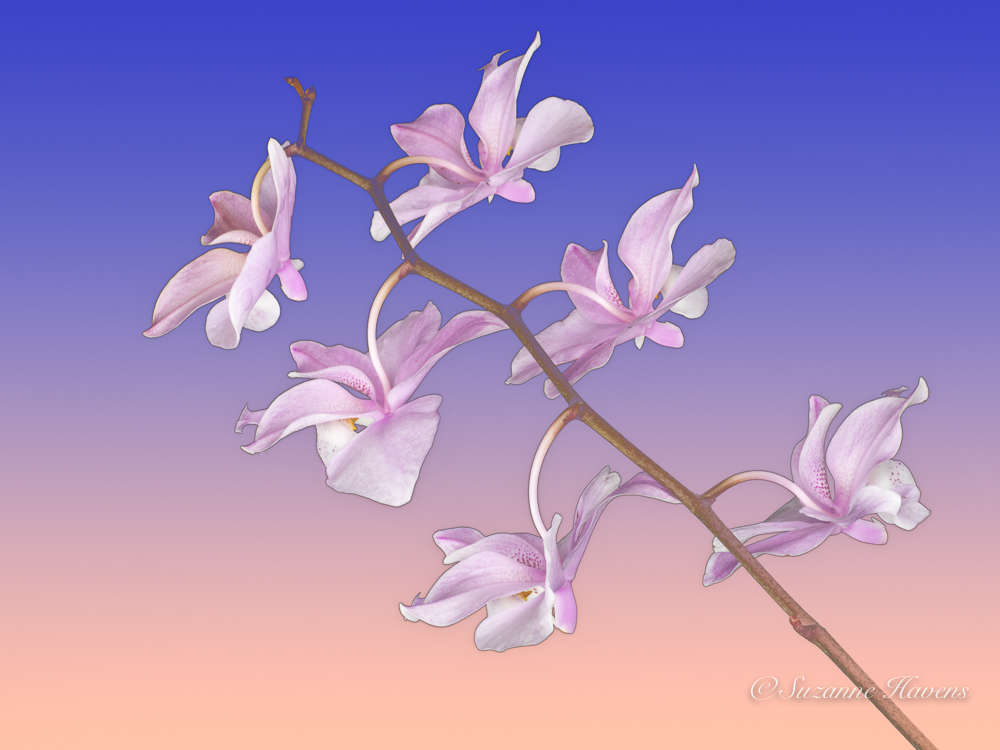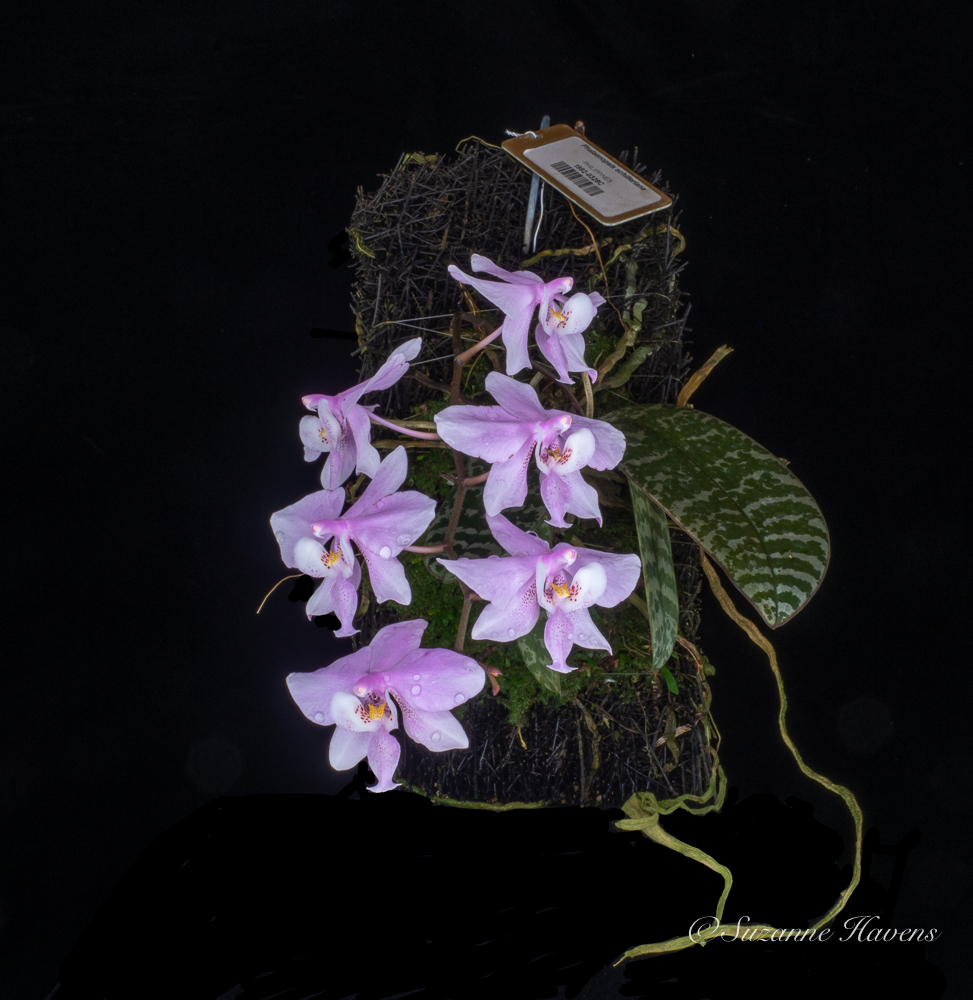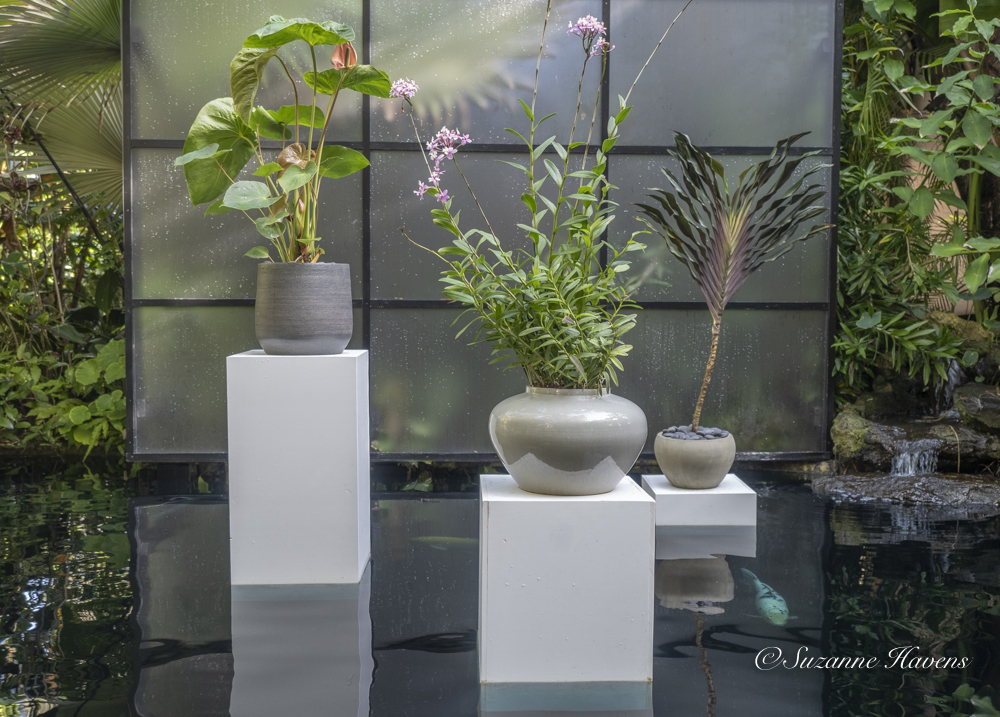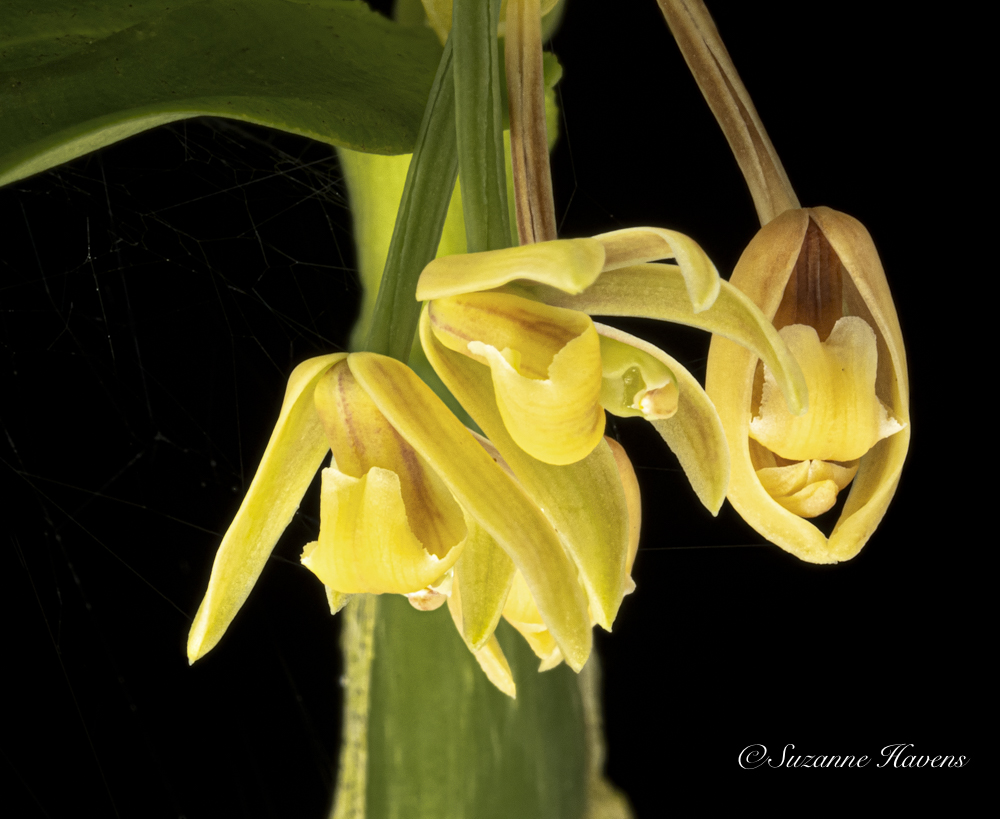It is such a joy for me to photograph tiny parts of plants, enlarge them, and see structures that were not visible to my eyes before. These plants are part of the living collection of Marie Selby Botanical Gardens in Sarasota.
I have a passion for making close-up photos of flowers. The following are from the collection of Marie Selby Botanical Gardens in Sarasota, Florida. These particular blooms are about one-quarter inch in size, so the photographs reveal more details than I can see in person.
Because macro lenses are notorious for their shallow depth of field, i.e., they focus one very thin slice at a time. Therefore I use a technique called focus bracketing or focus stacking to allow us to see a much greater depth of field. I make a large number of photos each focused slightly nearer to the subject (bracketing) then I stack them together in Adobe Photoshop and run a program that selects the most in-focus part of each photo and merges them into one. Any movement of the flower will cause the merged photo to misalign and make an interesting abstract. The artist in me make like the abstract result, but the botanists may be frustrated.
The Marie Selby Botanical Gardens Orchid Show 2022 has now closed and I am catching my breath. This year the curator asked the six volunteer photographers of the Selby’s Living Collection if we would consent to have our orchid photos printed large scale on aluminum and shown in their museum. We were happy to do so. He also asked us if they built us a temporary photo studio in the museum, if the four current studio photographers would demonstrate to the visitors how we make such detailed closeups of the flowers. We agreed and it was a delightful experience. We tethered our cameras to our computers and tethered them to a monitor they provided so the visitors could see on a large scale what the camera’s viewfinder was imaging. We focus bracketed the images, meaning that we took multiple images of each flower focusing on slightly different planes. Macro lenses have a notoriously shallow depth of field, so we use this technique to get everything in focus. We then stack these photos in a computer app and have the app select the most in-focus parts of each image and merge them into a single image.
This orchid is named Beallara Marfitch ‘Howard’s Dream.’
The flowers are quite small, so I used a macro lens to get very close and fill the frame. Usually I take a series of 10 to 15 images and stack them together in Photoshop. If there is any movement during the series, they won’t align and make ghost images, which is interesting in the abstract, but makes it hard to see the details. These live in the greenhouse and bloomed in mid-February.
As a volunteer photographer for the botany department of Marie Selby Botanical Gardens, I have the privilege of being able to pose the plants in front of a black drape, light them and make a series of photos. Some of these are single images. Some are “focus stacked,” with multiple images made and then stacked by focal area in Photoshop. If the flower moves at all during the multiple shots, strange abstracts emerge. I enjoy them, but it is details that the botanists need. I keyword them and then they are added to a worldwide data base for botanists, who compare and contrast by family, genus and species. I have included one of the “ruler shots” to show the size of bloom.
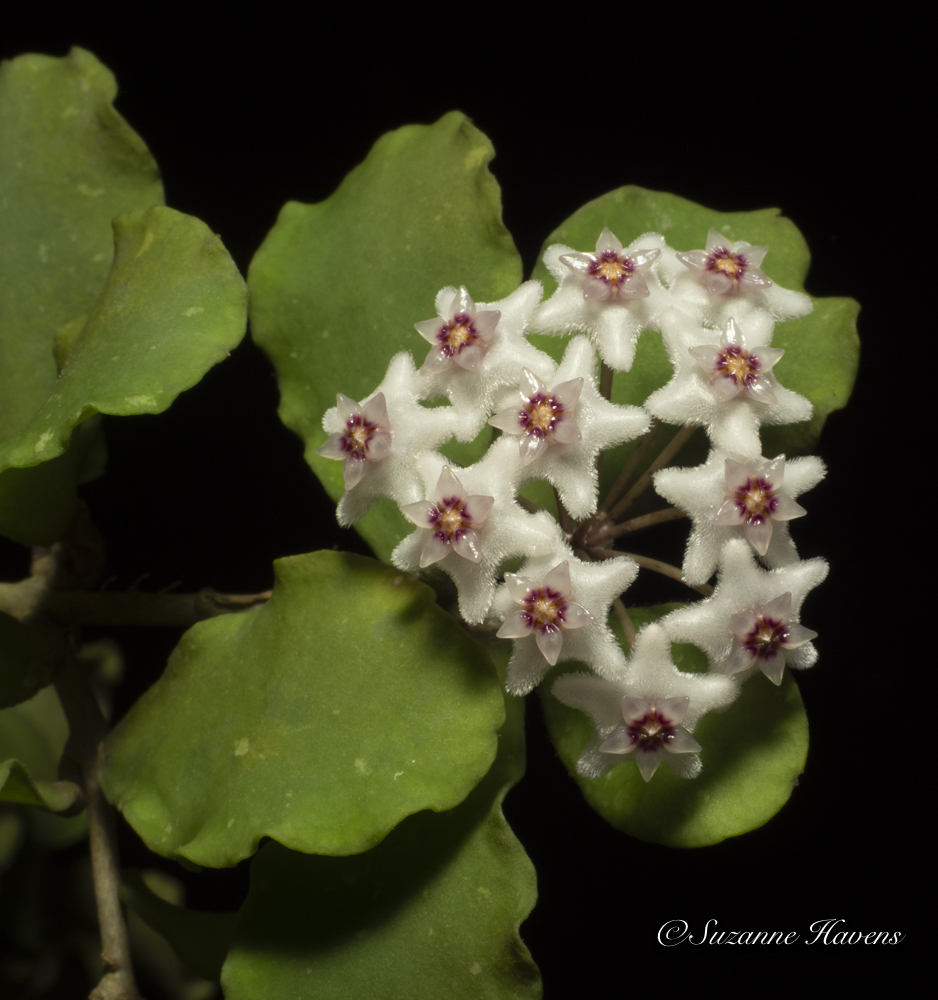
Apocynaeae, Hoya kanyakumariana, Marie Selby Botanical Gardens
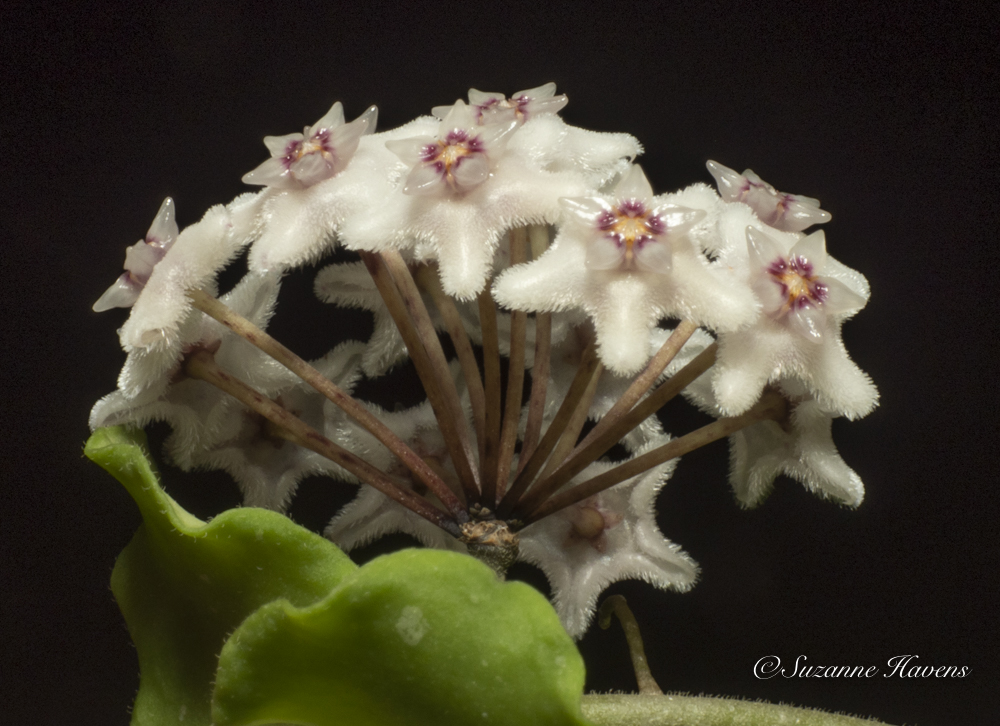
Apocynaeae, Hoya kanyakumariana, Marie Selby Botanical Gardens
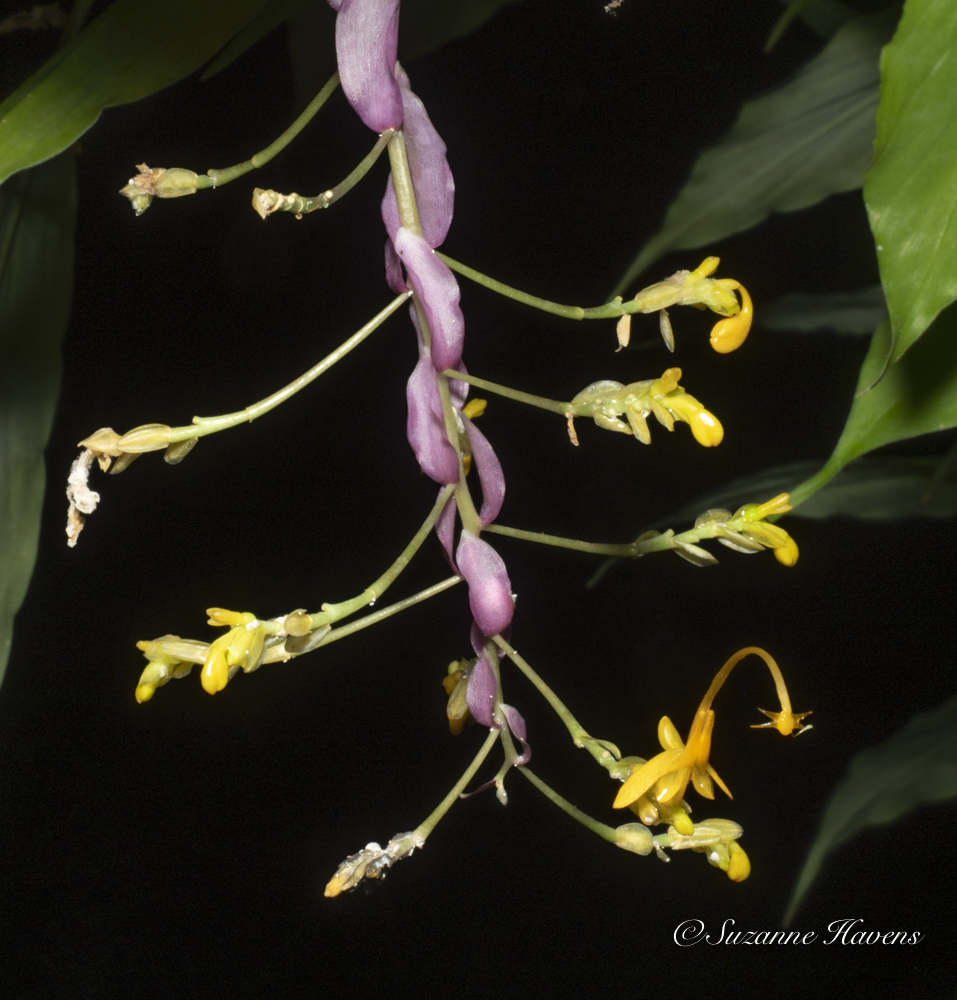
Zingiberaceae, Globba winitii, Marie Selby Botanical Gardens
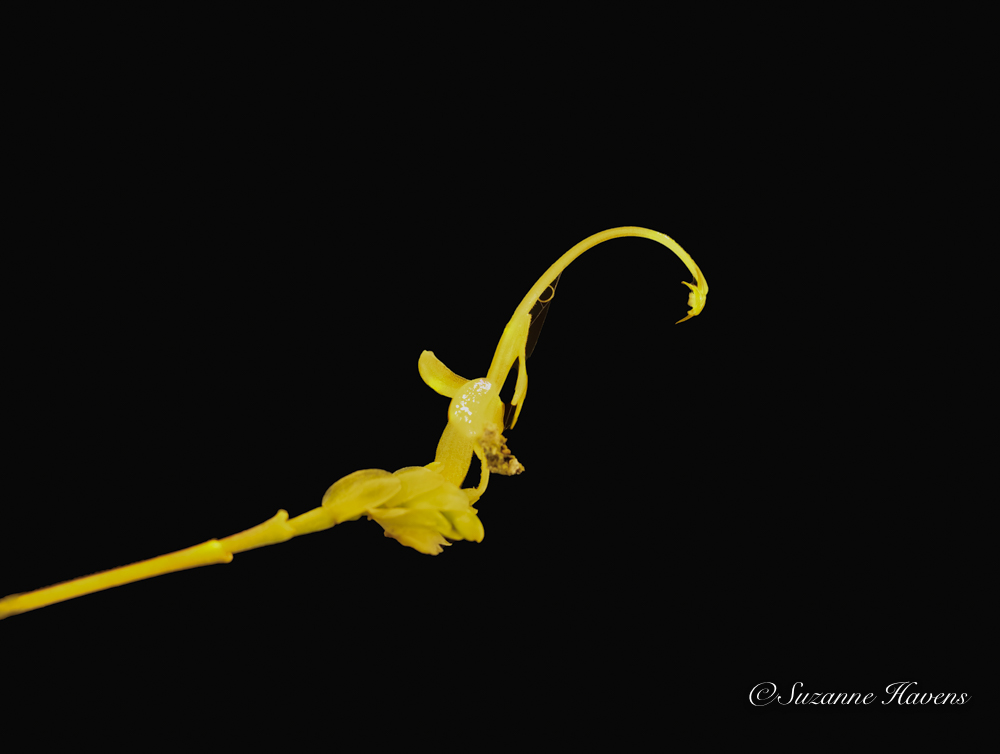
Zingiberaceae, Globba winitii, Marie Selby Botanical Gardens
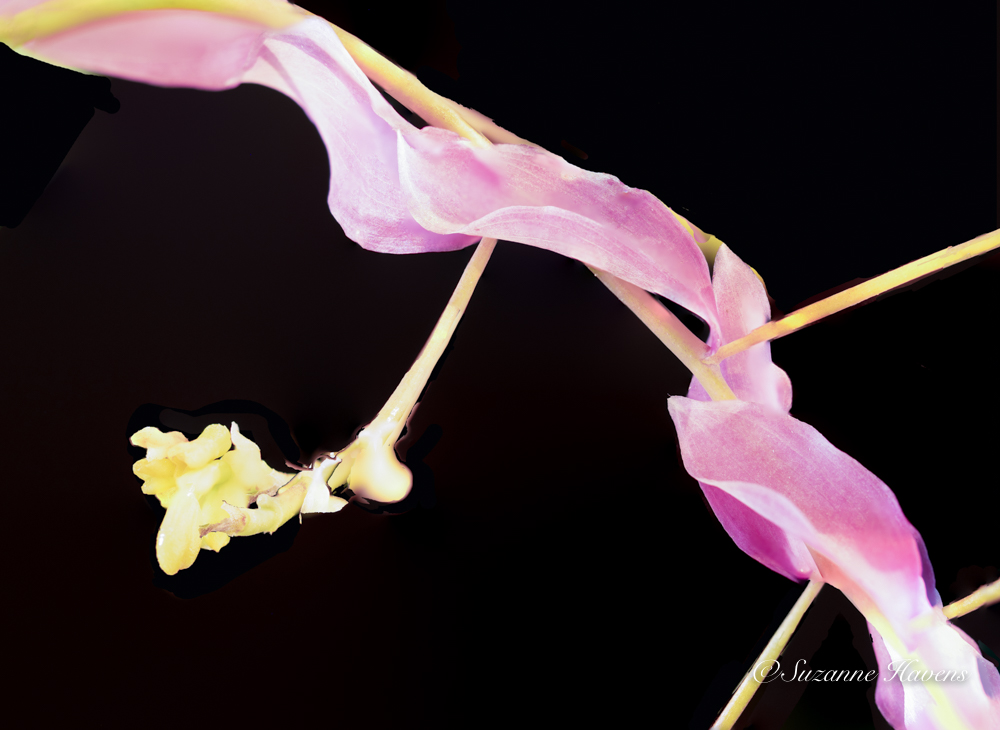
Zingiberaceae, Globba winitii, Marie Selby Botanical Gardens
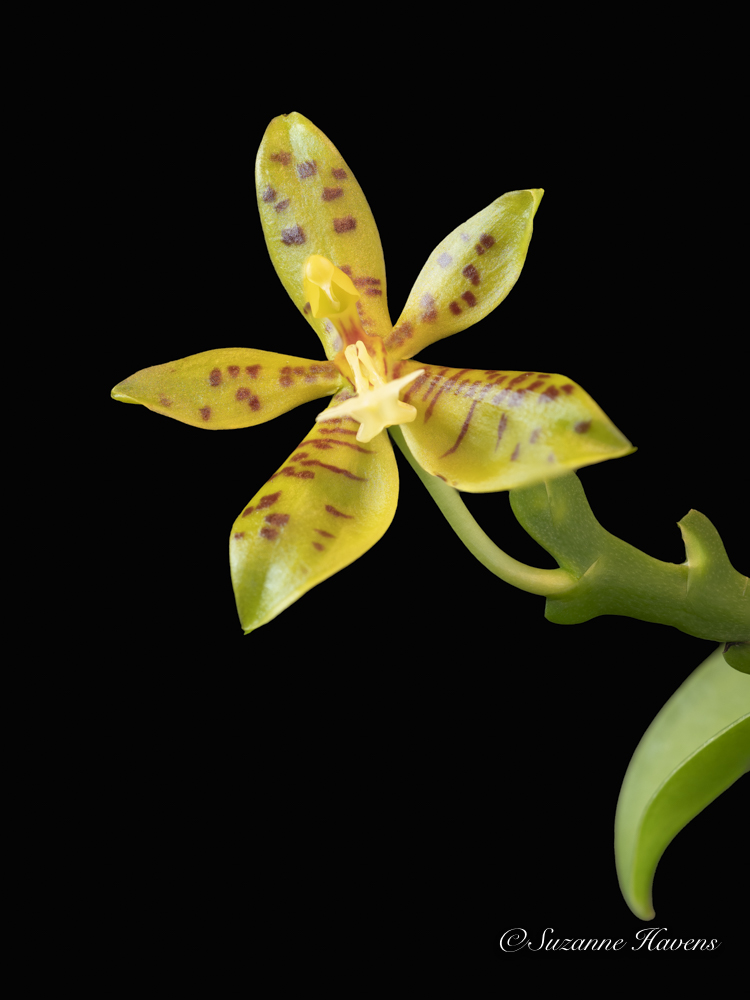
Orchidaceae, Phalaenopsis pantherina, Marie Selby Botanical Gardens (from Malaysia)
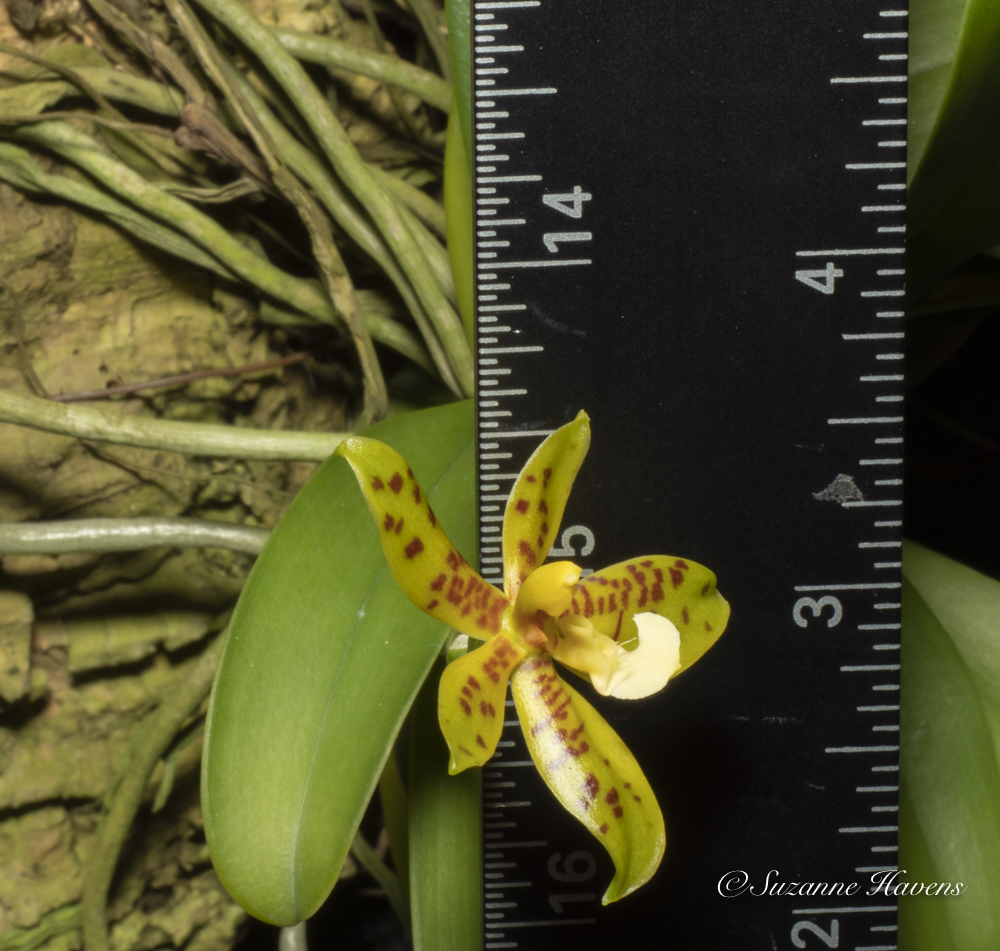
Orchidaceae, Phalaenopsis pantherina, Marie Selby Botanical Gardens (from Malaysia)
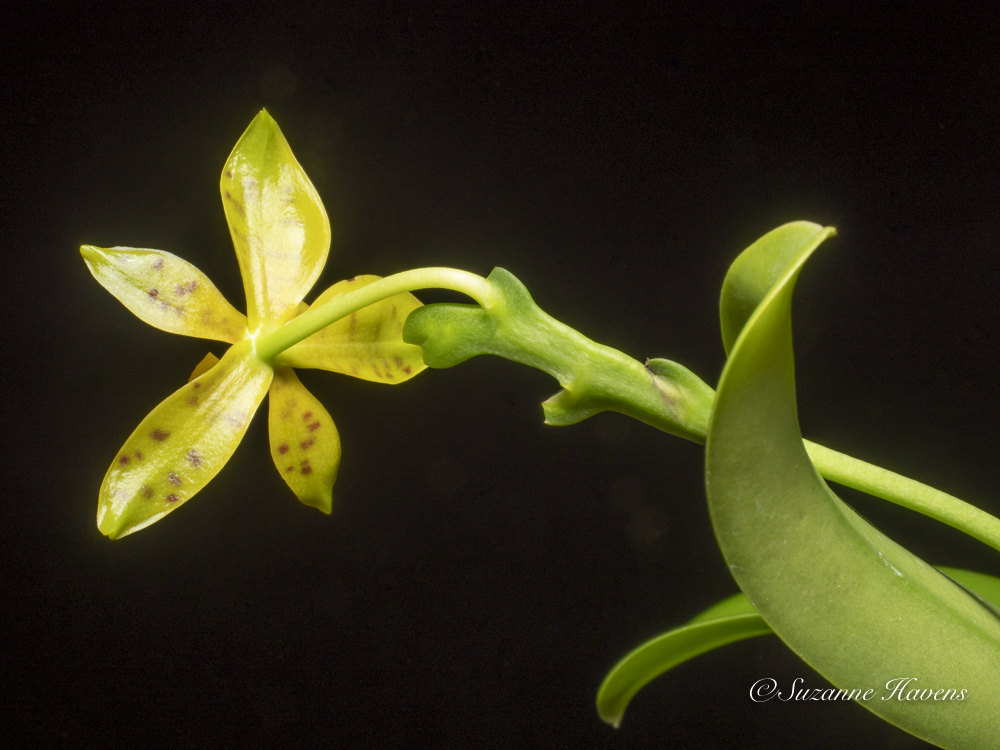
Orchidaceae, Phalaenopsis pantherina, Marie Selby Botanical Gardens (from Malaysia)
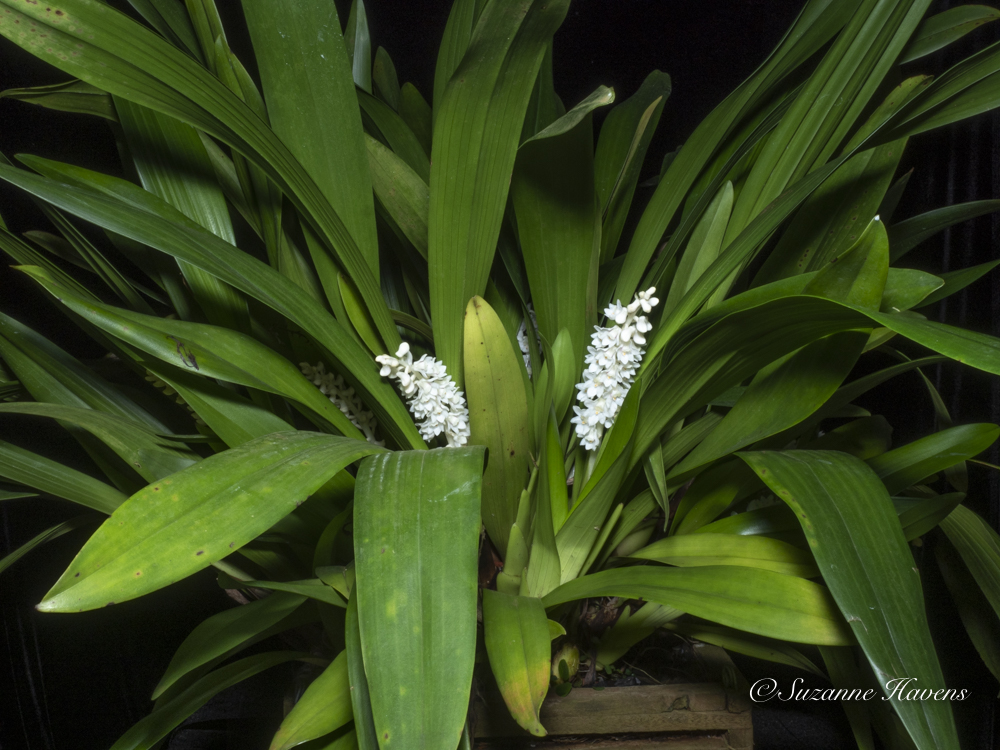
Orchidaceae, Eria Hyacinthoides, Marie Selby Botanical Gardens
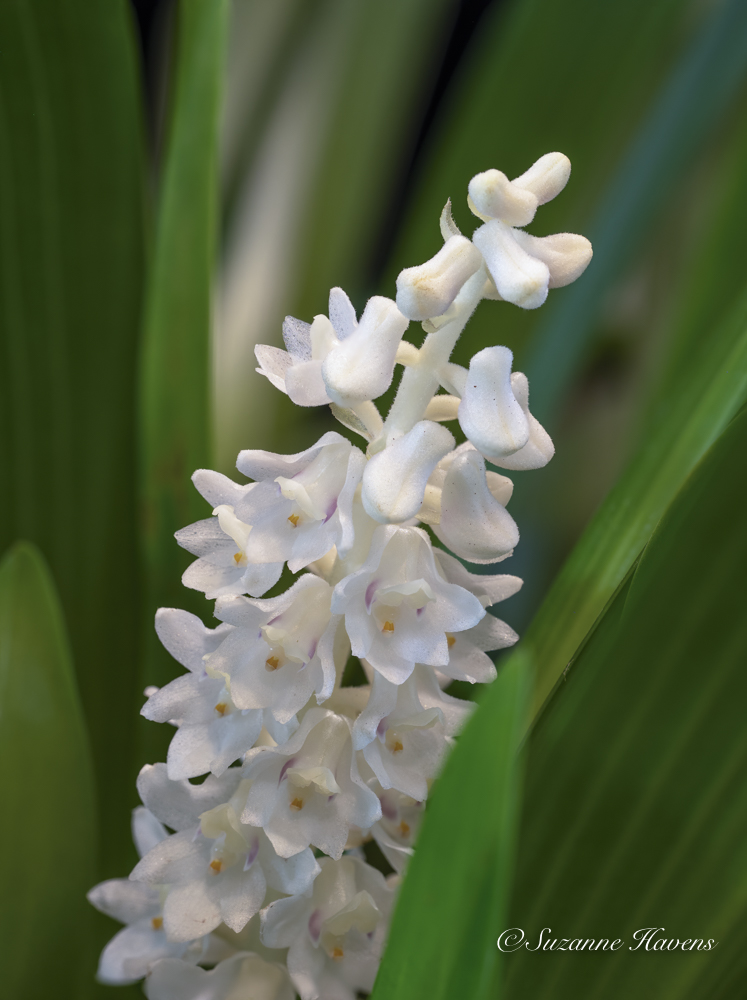
Orchidaceae, Eria Hyacinthoides, Marie Selby Botanical Gardens
The orchid and tillandsia blooms are about a half inch long! It is fun to be able to get close enough to them with enough light to be able to see them.
